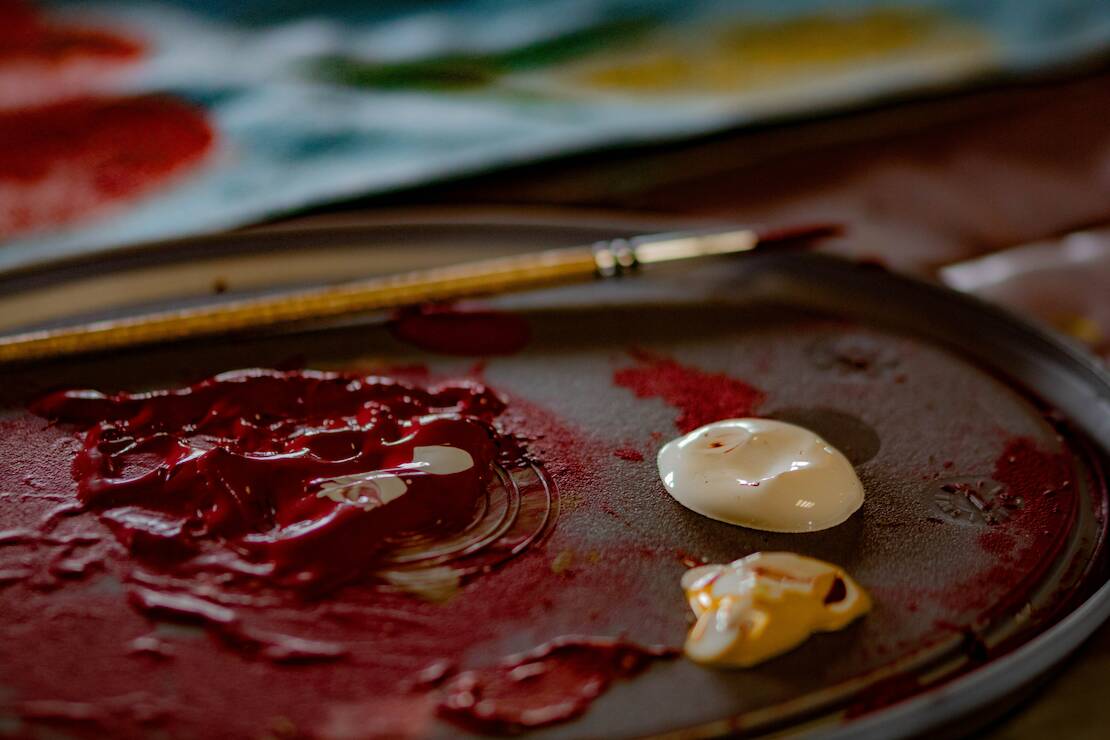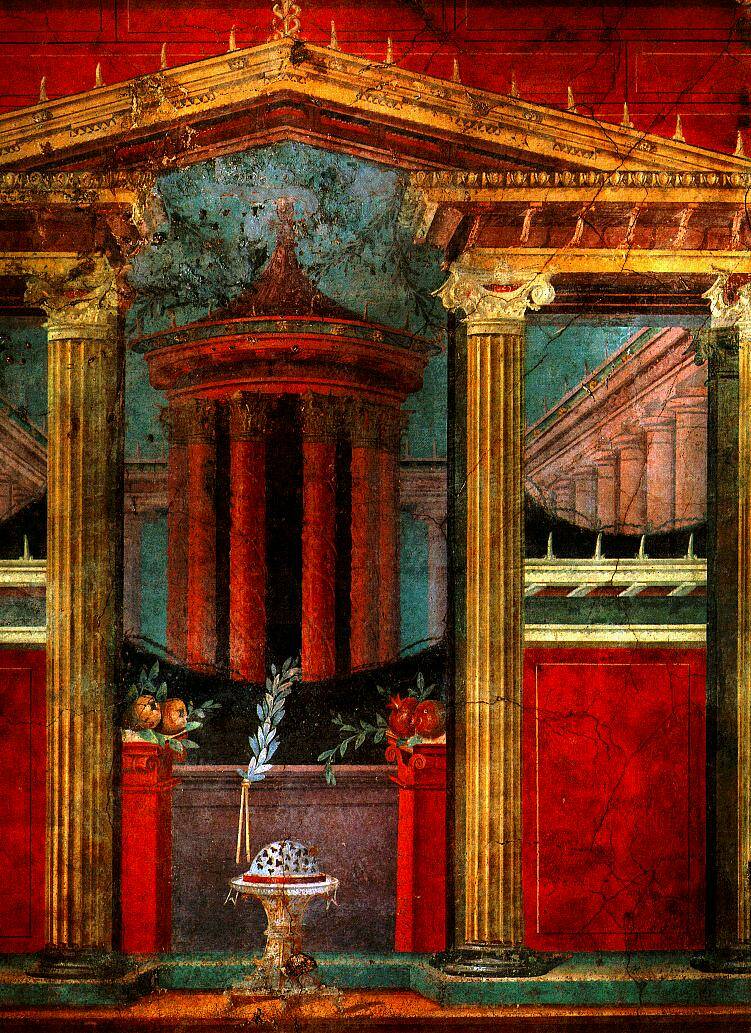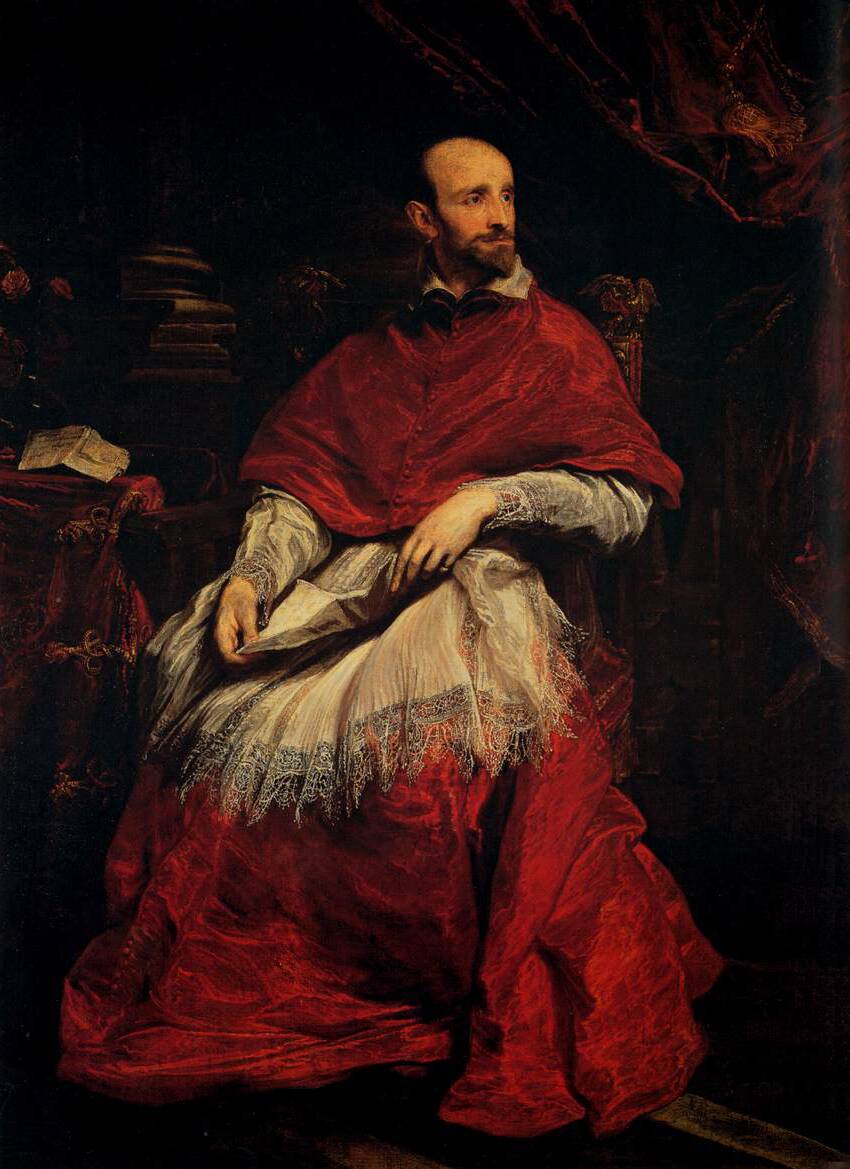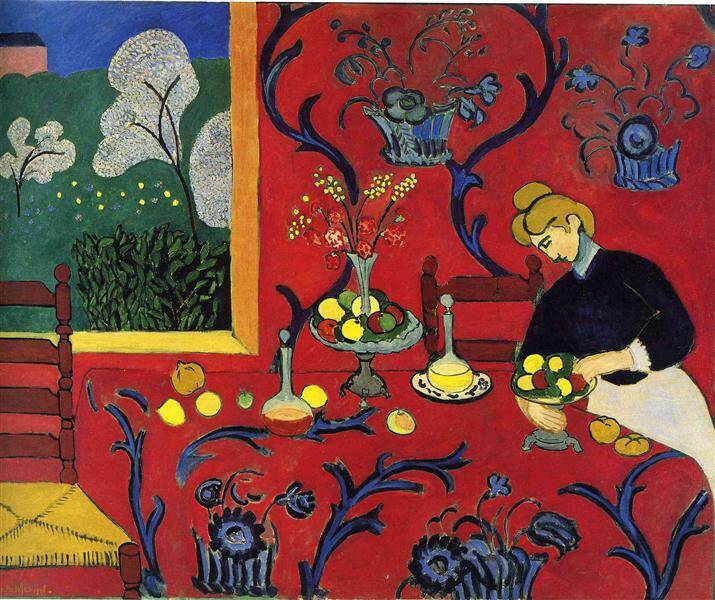- Home
- / Blog
- / Art History
The Intense and Fiery Nature of the Color Red
06/24/2021
Red Color, Three Nuances, One Goal: To Impress the Viewer
A basket full of shiny cherries, the prestigious carpet on which celebrities walk during award ceremonies, the sparkling lanterns of the Chinese New Year...and you, what image do you think of if you try to focus on the color red? Red is bright and shimmering, it is a dominant pigment that cannot go unnoticed, in clothing as well as in arts. It has sparked visual culture for centuries and it has been taken into account in many disparate societies and traditions, always with different color meanings.
Frequently associated with passion and love, red symbolizes energy and charm, but because of its strong nature, it has also often embodied the meaning of anger, danger symbolism, and controversial or erotic instincts.

The emotional and visual impact of red is one of the reasons why this color has long been the only one allowed on certain social occasions. The history of this primary color, like its predominant characteristics, is a story of power and sudden overturns. It was, above all, among the first pigments to be used in pictorial representations, along with black and white (which we discussed here). As prehistoric parietal cave art testifies, red was the first color fabricated and used for dyeing and painting, charging this tint with ancestral and archetypal meanings. Paintings with red have succeeded each other in the history of art, and have embodied deep symbolic meanings, as it happens with light (which we have done here).
Red, was initially conceived as a metaphor for love and glory, but it was also soon charged with religious meanings linked to the Catholic clergy, recalling the blood of Christ and at the same time the flames of Hell. It was the color of violence, and it symbolized the sufferings endured by martyrs and Christians. Judged immoral and impudent for its luxuriousness during the period of Protestant Reformation, red color in art changed suddenly its symbolism until it essentially went out of fashion. With the advent of the French Revolution, this color with a thousand faces came back into vogue, as red symbolism became increasingly associated with left-wing political movements and revolutionary ideology.
However, as is often the case when dealing with the symbolism of colors[CF2] , the emotions and meaning they express can vary from culture to culture; in the Far East, for example, red is extremely common in official ceremonies such as festivals or weddings; stripped of its impure connotations, in China [CF3] it is even the national color. The meaning of the red pigment is linked with vitality, success, and fortune and the iconic red lanterns are a popular embodiment of this talisman concept!

But what makes red such a catchy color? From a strictly cognitive and optical point of view, its ability to be an accent color certainly influences our perception. Red is a color that, when combined with the other nuances of the color scheme, be they tertiary or secondary colors, really strikes. It can emphasize the composition, breaking its rules and establishing a new rhythm. It is not just a question of making combinations with complementary colors, but of radiating a unique boldness. A red detail in a monochrome composition overturns the meaning of the whole image.

Anyway, precisely because it is so relevant to the color landscape and color mixing, one cannot be so vague. There are so many shades of red -cardinal, scarlet, coral, or burgundy…!- and even more varied compositions and techniques for achieving them in painting. To understand the color meaning of red in art, it is necessary to distinguish the various types of red used in the history of art, because the history of pigments is always bizarre, and it tells something about our society.
The first use of red dates back to the red ochre, already used in the Paleolithic age, as it was easily extractable from natural resources and composed of hematite. Later, in the Roman Era, cinnabar red became more widespread. It was a highly toxic material, as it also was the later minium (also known as red lead), which was mainly used to enrich medieval miniatures. Red pigment also has an ancient history in China; the first synthetic red, an orangish-red color of the lacquerware made with vermilion was produced there as early as the 4th century BC and became known as Chinese Red. There are also reds in the art history produced from organic materials, such as crimson, a shade close to purple, made from the dried bodies of female kermes insects, or carmine red, a very bright pigment extracted from cochineal. Each red in this incredible palette gives different effects to the painting; artists knew which ones to favor to impress their patrons and viewers.

We have discovered how red has changed, shape after shape, its techniques and meanings in the common imagination, but in this article, we want to go further. As we have already done with black and white paintings, we will immerse ourselves in the history of red and color symbolism in the art world. We will discover it through three exemplary case studies.
Paintings with red are frequent and strong, but the artists who realized them could have been driven by different intentions. This is a brief history of red art, but more importantly, it is a history of artists who have understood how to handle it.
Pompeian Red: between Eros and Myth
Among the masterpieces of art most celebrated for their red symbolism are certainly the frescoes found in Pompeii and Herculaneum[CF8] . Their red pigment called sinopsis at the time, after Sinope, the Turkish city where it was extracted is one of the distinctive features of these archaeological remains. It is also so bright due to the protection offered by the ashes of the lava after the terrible eruption of 79 AD.
But why did the villas of the ancient Romans have red walls? A taste far removed from today's trends in home decoration, and therefore even more surprising. It is thought that some walls are decorated with this accent color because of the significance of red: frescoes such as those in the Villa of the Mysteries, with amorous content, like the scene of the bride's preparation, or more erotic content, such as those of the Dionysian rituals and Triclinium Hall, could only be painted in Pompeian red! Bold, sensual, and flashy.
But there is more! Recent studies have shown that it is highly likely that not all of the frescoes we see today were red at the time. According to new research presented to Sapienza University, it is possible that the Pompeian red, in some rooms, is the result of a transformation in which the gases caused by the eruption would have altered the color of the frescoes. Originally, the red pigment may have been a kind of roasted yellow ochre. This is a discovery that would completely change the image of Pompeii! This new piece leads us to reflect on how the study of color meanings in the art can be relative, and always bound by the power of history and time.

Titian Red: a Colorful Milestone in the Renaissance
Have you ever heard of Titian red? Even in hair dye! This fascinating shade of red is strongly associated with the Venetian Renaissance master Titian and his painted ladies with reddish brownish-orange color hair and evanescent beauty. Titian red is extracted from vermilion, a synthetic substance already in use in China in the 4th century BC. Vermilion, highly toxic and expensive, was brought to Europe by Arab alchemists and was frequently used by renaissance painters.
Titian used it to paint the draperies of his figures, which were incredibly shiny and characterized by skillful use of juxtaposition of opaque and transparent pigments and color mixing, as can be seen in his Assumption of the Virgin, for the Basilica of the Frari, in Venice. He used it, of course, for his pale and sensual female figures, launching a veritable fashion among the noblewomen of the time. But his use of red also had a precise color meaning, which changed according to the content of the painting: the red of the sleeve
in Sacred and Profane Love, the purple in Paolo III and his nephews Alessandro and Ottavio Farnese emphasizes power, so convincingly that passers-by would bow before the canvas, the coppery of Venetian women depicted as pagan goddesses suggested sensuality. Titian was the king of reds during the Renaissance!

After the Renaissance, during the luxuriant Baroque period, red became increasingly linked to the church and the curia, as can be seen in the cardinal portraits by painters such as Van Dyck, Rubens, and Vermeer, among many others, only to be harshly criticized for being too ostentatious.

A Passion for Cadmium Red: Matisse, Red Motifs and New Meanings
In 1910, a new type of red became available on the market, was cadmium red. Cadmium pigment had extraordinary modern characteristics, which is why it was so popular with the avant-garde artists of the 20th century: an incredible lightfastness and excellent stability. Brilliant and intense, cadmium red became Henri Matisse's favorite color, representing a crucial turning point in his painting career. Seduced by the power of this pigment, Matisse tried to convince Renoir and other artists to adopt it in their techniques, but without success. The French painter used cadmium red to paint some of his most striking paintings: The Red Room, a decorative panel characterized by the flatness of the color, where the red motifs of the raspberries create a pattern on the walls that blurs the spatial planes of the room; but also, the Red Studio, where red symbolizes, with its aggressiveness, the total disintegration of the space of the room, in a complete illusion of color and lines.


Red in art has taken new different forms, in the contemporary artistic panorama it has moved to new meanings, increasingly abstract. Red embodied a sense of freedom when politically engaged artists used red flags as a symbol of socialism, anarchism, and left-wing politics. A great example of this tendency is the painting by the Italian artist Renato Guttuso, Togliatti’s Funerals, which represented the funerals of the Italian Communist Party secretary, highlighting the contrasts between the pale white faces of the participants and the rebellious red of the flags.


But going beyond the political significance of red, this color has also attracted people for its lyrical qualities, for example in Rothko's red art works[CF15] . His technical and material experimentation led him to use Lithol Red, a low-cost pigment available in the United States in the 1950s and 1960s in the ink industry, which was particularly sensitive to light, and which allowed the artist to obtain the damaging effect he researched.
Red has changed forms, meanings, and pigments over the centuries, but one thing is for sure: it is not a color that leaves you indifferent! It has no half measures: it is all or nothing. How to handle this indomitable leader of the color palette is still a challenge that architects, artists, designers, and all creative minds must take up.
If you enjoyed this article sign up for our newsletter to receive notification of Cinzia Franceschini's next article in her series exploring color symbolism in art and history.
_________________________________________________________________________________________________
 Cinzia Franceschini is an Italian Art Historian specialized in History of Art Criticism, with a second degree in Communication and Sociology. She studied in Padua, Brussels, Turin and wherever you can go with the power of the Internet. She works as guide in Museum Education Departments and as a freelance writer. She writes about Contemporary Arts and Social Sciences, mostly about them at the same time, in an inclusive, feminist, transnational perspective.
Cinzia Franceschini is an Italian Art Historian specialized in History of Art Criticism, with a second degree in Communication and Sociology. She studied in Padua, Brussels, Turin and wherever you can go with the power of the Internet. She works as guide in Museum Education Departments and as a freelance writer. She writes about Contemporary Arts and Social Sciences, mostly about them at the same time, in an inclusive, feminist, transnational perspective.


